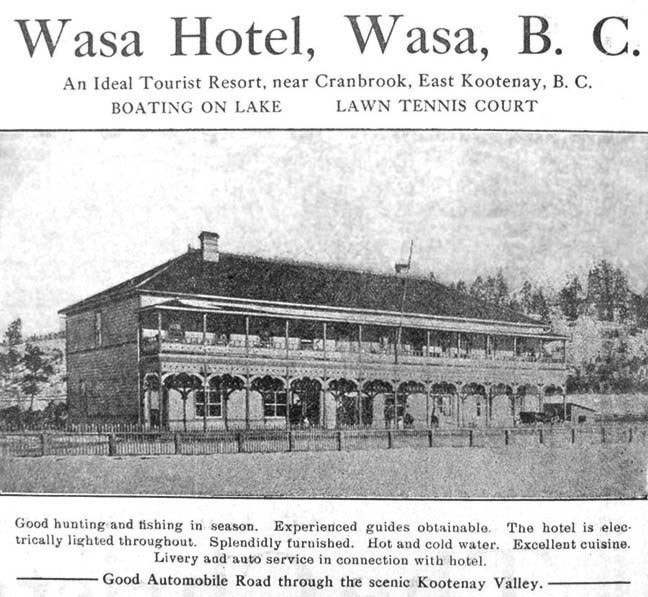Jim Cameron
"The war will be over by Christmas," was the word on the streets in the autumn of 1914, in the clubs, in the parlours and kitchens and certainly in the barracks among the boys fighting for King and Country in Europe.
Of course, the war would not be over by Christmas, or the next Christmas, or the next two Christmases after that. In truth, the war was just beginning and its effects were already felt throughout the Commonwealth.
The Christmas of 1914 was significantly different than that of the previous year. A gradual recession now became a time of generally doing without. The eight page Herald newspaper — full of ads for toys and furniture, fur coats and perfumes, candy and novelties the year before — was down to half that size by the winter of 1914 and the advertisements did not concern themselves with frivolous luxuries, It was, as an editorial declared, "the year of practical gifts".
As far as practical goes, the Cranbrook of 100 years ago was not the self-sufficient agrarian society one might suppose. It was, in fact, a community primarily dedicated to railroading and lumbering, both of which were in decline.
Oh, there were gardens, most everyone had a garden — even the children, who were encouraged to take part in potato growing competitions, the winners of which received a badge with a purple ribbon that read "Better Boys and Better Girls, Better Crops" — and there were farms, but generally on a small scale.
The orchards of yore, promised by rather unprincipled land speculators, failed to materialize, and, as today, farming in the area proved a speculative enterprise at best. Much of Cranbrook's retail produce was not produced locally but rather imported by rail, but, by the winter of 1914, it was becoming obvious that it was in the best interests of all to attempt to make the community more self sufficient.
So saying, the Cranbrook Farmer's Institute, a long-standing organization, put forth the concept of a public market along the lines of those proving successful in Calgary, Edmonton and, most notably to the local competitive of spirit, Nelson.
"Going back to the land is the source of all prosperity," spoke the local newspaper. "If people of Cranbrook want local farmers to continue producing, they must buy their produce."
The concept met with general agreement. When the cost of renting the Hamilton livery building on Cranbrook Street (near the north end of the present day Credit Union parking lot) proved impractical, W. B. McFarlane offered the free use of his former furniture store on Armstrong Avenue one a week on a trial basis.
The big question, it appeared, was whether the local farmers could provide enough produce to justify a regular city market.
The Cranbrook Public Market opened in bitterly cold weather to a large crowd on Saturday, December 24, amid speeches by Mayor Simon Taylor and others.
"Mayoress" Mrs. Taylor cut the ribbon and made the first purchase, a large turkey. Nineteen sellers plied their wares which included eggs, poultry, candy, honey, vegetables, pork, turkeys, mild, bread, pastry, pies, candy, cheese and crocheted, knitted and embroidered work. Prices generally ranged below retail and the market was sold out by early afternoon.
A smiling (obviously well-spoken) farmer remarked "this market is a Godsend to many of us poor farmers this winter. It will prove a great impetus for increased production next summer."
The citizens of Cranbrook, despite the war and the rationing and recession, did not just share their remaining wealth with the local farmers. The Sunshine Society, dedicated to the support of the many poor families in the community, received numerous donations, as did the Belgium Relief Fund (a country decimated by the onslaught of the German war-machine) and so, too, the St. John's Ambulance Society.
Numerous patriotic benefit dances were held in order to send aid to the troops, many of whom were training on Salisbury Plains in England by December.
The weather remained exceptionally cold but the skaters and curlers took happily to the ice, including the outdoor arena on the corner of 8th Avenue and 2nd Street, which boasted a rink of 66 feet by 122 feet, dressing rooms and an electric light for night skating.
The Poultry Association held its first annual show at the fair grounds on Moir Hill, deer hunting proved plentiful and the new city water system worked pretty well when it wasn't frozen.
As for the public market, it received no real aid from the city and eventually folded in the spring of 1915.
A lengthy editorial of March of that year gave the three stages of the enterprise as, in a nutshell: 1) A few enthusiasts convinced of the advantages of a market; 2) A crowded market place in which sellers increasing prices "week after week until at last, buyers, finding they could get better prices and longer credit at the store, left the market in disgust;" and 3) the sellers producing less and selling to an ever thinning crowd of buyers.
In March, 1915, it was stated "We may take it that, should the present market fall through, one will need to live a long time in Cranbrook before they see another started."
It was an accurate statement, it took almost a century.Janus will not be published on Dec. 26, and wishes to take this time to send along to readers the hopes of a very merry Christmases and the happiest of New Years.
janusthenandnow@shaw.ca
